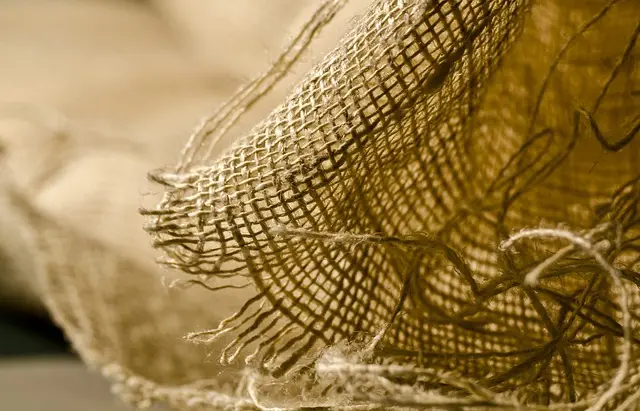Muscle soreness after intense physical activity is a common occurrence, scientifically known as delayed-onset muscle soreness (DOMS), which presents as pain or stiffness in the affected muscles within 24 to 72 hours post-exercise. This condition arises from microscopic muscle damage and inflammation as part of the body's repair process. For those exploring natural remedies, the kratom tree (Mitragyna speciosa), native to Southeast Asia and traditionally used for its analgesic properties, has been examined for its potential to alleviate muscle soreness. Its active compounds, such as 7-hydroxymitragynine and mitragynine, are believed to interact with opioid receptors to provide pain relief. However, the use of kratom should be approached with caution due to its potency; users should consider personal sensitivity and seek professional guidance before incorporating it into their recovery routines. The kratom tree image is a valuable educational tool, representing the plant's natural origins and contributing to discussions on its benefits. Ongoing research is examining kratom's efficacy, optimal dosing, and potential interactions, with a note on its varying legal status by region. A balanced fitness regimen combining cardiovascular exercises, strength training, and flexibility routines, such as yoga, can enhance the effects of kratom for recovery while minimizing joint stress. Always consult with healthcare providers to ensure that any use of kratom aligns with individual health needs and objectives.
Muscle soreness can be a persistent challenge for fitness enthusiasts, often dampening the motivation to stay active. Understanding the origins of this discomfort is key to effectively managing it. This article delves into the science behind muscle soreness and explores how kratom, a natural ally in wellness, can play a role in mitigating post-workout aches. With insights on how to incorporate targeted exercises into your routine, learn how to craft a customized workout plan that complements kratom use for optimal relief. Enhance your fitness journey with the right knowledge and tools, including tips on selecting images of the kratom tree to aid visual understanding of this plant’s potential benefits.
- Understanding Muscle Soreness and Its Causes
- The Role of Kratom in Alleviating Post-Workout Aches
- Crafting a Customized Workout Plan to Complement Kratom Use for Soreness Relief
Understanding Muscle Soreness and Its Causes

Muscle soreness, often referred to as delayed-onset muscle soreness (DOMS), is a common experience among individuals engaging in unfamiliar or intense physical activities. It typically occurs within 24 to 72 hours post-exercise and is characterized by pain, tenderness, or stiffness in the muscles that were used during the activity. The cause of this discomfort is multifactorial, involving microscopic muscle damage from eccentric contractions, inflammation, and biochemical changes resulting from the repair process. Understanding the mechanisms behind muscle soreness is crucial for effective management and recovery.
When exploring the origins of muscle soreness, one cannot overlook the role of the kratom tree (Mitragyna speciosa), an herbal supplement whose leaves are traditionally used in Southeast Asia for their analgesic properties. Research suggests that certain compounds found within the kratom leaf may interact with opioid receptors in the brain, providing pain relief and potentially aiding in muscle soreness relief. As interest in natural remedies for muscle recovery grows, the kratom tree image has become a topic of discussion among fitness enthusiasts and healthcare professionals alike. However, it is important to approach such supplements with caution, as their efficacy, optimal dosing, and interactions with other substances or medications are still under scientific scrutiny.
The Role of Kratom in Alleviating Post-Workout Aches

When engaging in rigorous workout routines, muscle soreness can be a common and sometimes debilitating experience. The kratom tree, scientifically known as Mitragyna speciosa, has garnered attention for its potential role in alleviating post-workout aches. Traditionally used in Southeast Asia for its stimulating and analgesic properties, kratom contains a variety of alkaloids that may contribute to muscle relaxation and pain relief. The active compounds found within the kratom leaves, such as 7-hydroxymitragynine and mitragynine, are believed to interact with the body’s opioid receptors, which can reduce pain perception and induce a soothing effect on the muscles.
Incorporating an image of the kratom tree into discussions about its effects can be informative and engaging for readers, as it visually represents the natural source of these compounds. It’s important to approach the use of kratom with caution, however, as it is a potent substance that requires careful consideration of dosage and individual sensitivity. The scientific community continues to study the effects of kratom on muscle soreness, with some research suggesting its potential as an alternative or complementary measure for pain management following intense exercise. Users should consult healthcare professionals before integrating kratom into their post-workout recovery regimen, especially considering its interaction with other medications and its legal status in various jurisdictions.
Crafting a Customized Workout Plan to Complement Kratom Use for Soreness Relief

When incorporating kratom into a workout regimen designed for muscle soreness relief, it’s crucial to approach the integration with care and knowledge. Kratom, derived from the Mitragyna speciosa tree, has been traditionally used in Southeast Asia for its various health benefits, including pain relief and increased energy. A customized workout plan that complements kratom use should consider the specific effects of the strain employed. For instance, strains like Maeng Da are known for their energizing properties, making them suitable for more intensive exercise sessions, while red vein strains may offer a calming effect that can be beneficial during recovery phases.
To craft an effective workout plan, one should start by understanding the physiological effects of kratom and how they interact with the body’s response to physical activity. A balanced routine might involve a mix of cardiovascular exercises, strength training, and flexibility workouts, all tailored to the individual’s fitness level and the specific kratom strain being used. For example, incorporating low-impact cardio such as swimming or cycling alongside resistance training can help build muscle while minimizing joint stress. Additionally, stretching and yoga can aid in recovery by promoting circulation and flexibility, which may complement the soothing effects of kratom. Including a kratom tree image in promotional materials for this workout plan can visually represent the natural origins of the supplement and its connection to health and wellness practices. Always consult with a healthcare provider before integrating kratom into any fitness routine, ensuring that it aligns with individual health considerations and goals.
Muscle soreness is a common experience for many individuals engaging in physical activity, particularly when introducing new exercises or intensifying workouts. Understanding the origins of muscle soreness, as detailed in this article, is the first step toward effectively managing and alleviating it. The exploration of Kratom’s role in post-workout aches reveals its potential as a natural aid in promoting comfort and well-being. By integrating a personalized workout regimen that complements Kratom use, individuals can enhance their recovery process and maintain an active lifestyle without the hindrance of persistent soreness. For those interested in visualizing the kratom tree image, it’s a compelling representation of the plant from which this versatile substance originates, offering a tangible connection to its natural form. This holistic approach to fitness and recovery not only addresses immediate discomfort but also supports long-term health and activity levels, ensuring that muscle soreness becomes less of an obstacle and more of a sign of a body in motion.






